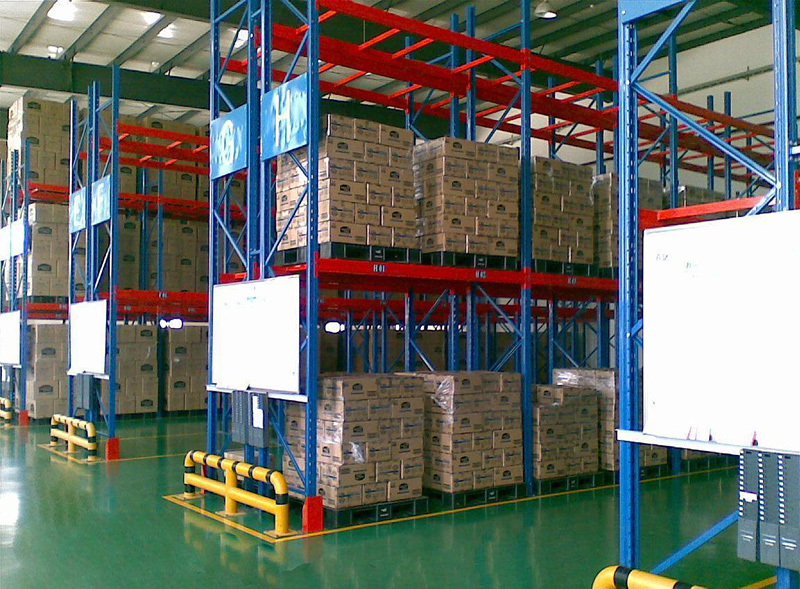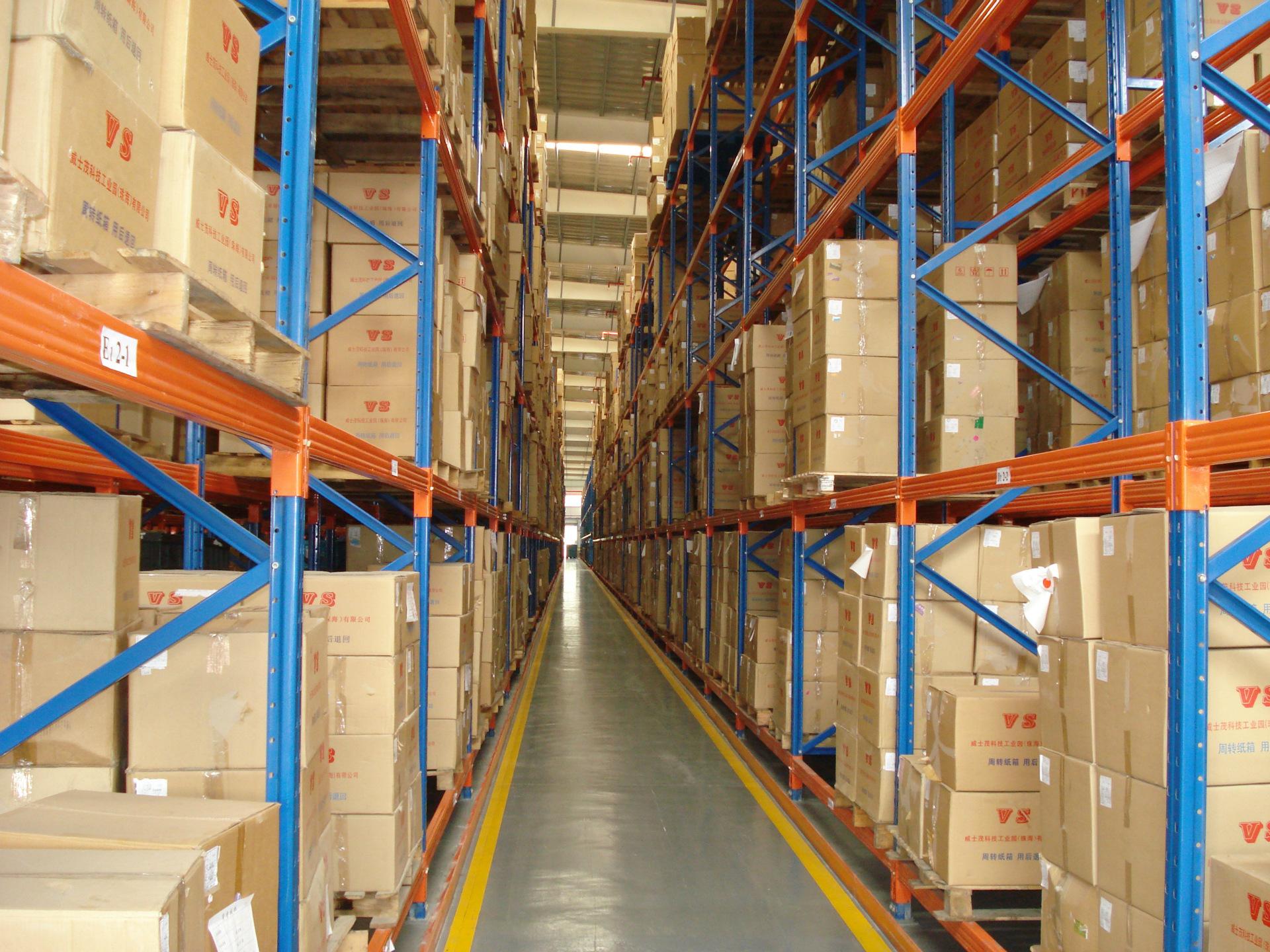In the relentless pursuit of warehouse efficiency and cost savings, drive in pallet racks stand out as a powerhouse solution for high-density storage. Unlike traditional selective pallet racking, drive in pallet racks are designed for depth, not just width. This guide dives deep into what makes drive in pallet racking unique, exploring its benefits, operation, ideal applications, and critical considerations. If you're battling space constraints and storing large quantities of similar SKUs, understanding drive in pallet racks is essential.

What Exactly Are Drive In Pallet Racks?
Drive in pallet racks, also known as drive-through racking (when accessible from both ends), are a specialized type of pallet storage system. Their defining characteristic is that forklifts physically drive into the rack structure itself to place or retrieve pallets. This is fundamentally different from selective racking where aisles exist between every rack row.
The system is constructed from upright frames and horizontal rails that create multiple, deep storage lanes. Each lane typically holds several pallets deep, one behind the other, on parallel rails. There are no aisles between the lanes within a single racking bay. Instead, a single access aisle serves multiple deep lanes. The structure relies heavily on its frame and guide rails for support, meaning the racks themselves guide the forklift and support the pallets stored deep within the lane.
How Drive In Pallet Racks Operate: The Forklift Dance
The operation of drive in pallet racks is intrinsically linked to the type of forklift used – typically counterbalanced forklifts or reach trucks designed for the required clearance heights. Here's the step-by-step process:
Approach: The forklift operator lines up with the specific storage lane entrance from the access aisle.
Entry: The forklift carefully drives into the lane, elevated to the correct storage level. Guide rails on either side help keep the forklift centered.
Placement/Retrieval:
Loading: The operator drives deep into the lane, places the pallet onto the rails at the furthest available point, then carefully reverses out.
Unloading: The operator drives in, picks up the first pallet encountered (which will be the last one loaded, adhering to Last-In-First-Out), and reverses out.
Exit: The forklift backs completely out of the lane into the main access aisle before moving to the next location.
This "drive-in" operation necessitates skilled operators due to the confined space and precision required when maneuvering within the rack structure. Safety systems like lane end protectors and column guards are crucial.
Unlocking Massive Storage Density: The Core Advantage
The primary and most compelling benefit of drive in pallet racks is significantly increased storage density. By eliminating numerous aisles found in selective racking systems, drive in racking utilizes the available cubic warehouse space far more efficiently. Consider this:
Reduced Aisle Space: Traditional systems might dedicate 50% or more of floor space to aisles. Drive in pallet racks drastically reduce this percentage, as one aisle serves many pallet positions deep within the structure.
High Cube Utilization: By storing pallets multiple deep and high, drive in pallet racks maximize vertical space and floor space simultaneously.
Ideal for Large Volumes: This density makes drive in pallet racking exceptionally cost-effective for warehouses storing very large quantities of a limited number of SKUs.
This density translates directly into tangible benefits: lower cost per pallet position, reduced warehouse footprint requirements (or more storage in an existing space), and potentially lower overall facility costs.

Ideal Applications: Where Drive In Pallet Racks Shine
Drive in pallet racks are not a universal solution, but they excel in specific scenarios:
High-Volume, Low-Variety Inventory: Perfect for storing large quantities of the same product (e.g., beverages, packaged food, paper products, building materials like bricks or tiles). The FIFO (First-In-First-Out) limitation is manageable when dealing with identical SKUs where rotation isn't critical, or LIFO (Last-In-First-Out) is acceptable.
Cold Storage Warehouses: Refrigerated and frozen storage space is extremely expensive. The high density of drive in pallet racks minimizes the costly cubic footage needed, leading to substantial energy and operational savings. They are very common in freezer applications.
Bulk Storage: Staging raw materials or finished goods where immediate access to every single pallet isn't required.
Seasonal Products: Warehousing items with predictable, high-volume demand peaks (e.g., holiday decorations, seasonal apparel) where maximizing space during off-peak times is key.
Breweries & Beverage Distribution: Storing large quantities of uniform pallets (cases of cans/bottles) is a classic application.
Critical Design Considerations & Limitations
While powerful, drive in pallet racks have inherent characteristics that must be carefully evaluated:
LIFO Inventory Management (Drive-In): The standard "drive-in" configuration (access from one end only) operates on a Last-In-First-Out (LIFO) basis. The last pallet loaded into a lane is the first one retrieved. This is unsuitable for perishable goods or products with strict expiration dates requiring strict FIFO rotation. Drive-Through racks (access from both ends) can achieve FIFO but require more space.
Reduced Selectivity & Accessibility: You cannot directly access any specific pallet within a lane without moving others first. Accessing a pallet deep in a lane requires retrieving all pallets in front of it. This makes them poor for high-SKU environments or orders requiring many different items.
Forklift Operator Skill & Safety: Operating within the confined lanes requires highly skilled and careful operators. Collisions with the rack structure are a significant risk, making robust rack protection (upright guards, rail end caps) and thorough operator training mandatory. Speed of operation is generally slower than selective racking.
Structural Requirements & Cost: The racks themselves bear more load and require robust construction, often using heavier gauge steel than selective racking. The upfront investment per pallet position can be lower due to density, but the overall system cost for the structure can be significant. Careful engineering for floor loads and seismic requirements (if applicable) is vital.
Lane Depth & Configuration: The optimal number of pallets deep per lane (typically 3-7) depends on pallet size, product weight, forklift maneuverability, inventory turnover, and required throughput. Deeper lanes increase density but reduce accessibility and throughput speed. Height is constrained by building clear height and forklift capabilities.
Required Clearances: Precise measurements for lane width (pallet width + clearance), overall system height, and, crucially, the turning radius and mast height clearance for the specific forklifts are non-negotiable during design.
Comparing Drive In Racks to Other High-Density Solutions
Drive in pallet racks occupy a specific niche within the high-density storage spectrum:
vs. Selective Racking: Selective offers 100% selectivity and faster access but much lower density. Use selective for high-SKU, high-turnover; use drive-in for low-SKU, high-volume bulk.
vs. Push Back Racking: Push back offers better selectivity (LIFO within each lane level) and potentially faster access than drive-in, but usually at a higher cost per pallet position and slightly less depth density. Push back is often preferred for a larger number of SKUs than pure drive-in can handle.
vs. Pallet Flow Racking: Flow racking provides true FIFO via gravity rollers, ideal for high-turnover perishables. However, it's significantly more expensive per pallet position than drive-in and has limitations on weight and pallet condition.
vs. Mobile Pallet Racking: Mobile racks offer very high density (only one aisle movable) and full selectivity but come with high cost, complexity, slower access times, and significant floor load requirements. Density is often higher than drive-in, but operational dynamics are very different.
Implementing Drive In Pallet Racks Successfully
A successful drive in pallet rack installation hinges on meticulous planning:
Thorough Needs Analysis: Precisely define SKU profiles, volumes, turnover rates, and required throughput. Is LIFO acceptable?
Expert Design & Engineering: Engage experienced warehouse designers and structural engineers. Detailed CAD layouts and structural calculations are essential. Consider future expansion.
Precise Specification: Define pallet sizes, weights, forklift specs (including mast lowered height), required clearances, and safety features upfront.
Quality Components: Source racks from reputable manufacturers meeting relevant safety standards (e.g., RMI in North America). Don't compromise on steel gauge or protection.
Professional Installation: Use certified installers to ensure structural integrity and safety.
Comprehensive Operator Training: Rigorous training focused on maneuvering within lanes, load handling, and safety protocols is non-negotiable.
Ongoing Maintenance & Inspection: Implement a regular inspection program (both internal and by qualified rack inspectors) to identify and address any damage promptly. Follow RMI or local guidelines.
Drive in pallet racks remain a cornerstone solution for warehouses prioritizing maximum storage density for homogeneous, high-volume products. Their ability to dramatically reduce aisle space and lower the cost per pallet stored is undeniable, especially in costly environments like cold storage. When SKU variety is low, turnover patterns suit LIFO (or drive-through FIFO), and skilled forklift operation is available, drive in pallet racking delivers exceptional space utilization.
However, the trade-offs – primarily LIFO inventory flow, reduced selectivity, slower access times, and higher demands on operator skill and rack protection – cannot be ignored. Carefully weigh your specific inventory characteristics, operational requirements, and safety culture against these limitations.
If your primary challenge is storing vast quantities of identical pallets and maximizing every square foot is paramount, drive in pallet racks deserve serious consideration as a powerful tool to optimize your warehouse footprint and operational costs. Consult with qualified warehouse design professionals to conduct a detailed feasibility study and determine if drive in pallet racking is the key to unlocking your storage potential.







